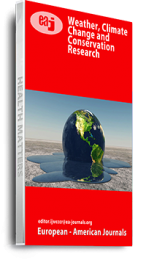Land suitability mapping is a pre-requisite for optimum and sustainable crop production which ensures food security. However, in Konshisha Local Government Area, Benue State, Nigeria, little efforts have been made in this direction to provide land suitability information required for optimum soybeans production resulting to low productivity which threaten efforts to achieve the Sustainable Development Goal (SDG) 2 of eradicating hunger by 2030. Thus, the aim of this study was to map land suitable for optimum and sustainable soybeans production in the area. Remote sensed data from Climate Research Unit (CRU), University of East Anglia, National Aeronautical Space Agency’s (NASA) Shuttle Radar Topographic Mission (SRTM), Environmental Systems Research Institute’s (ESRI) land use land cover data and African Soil Information Service’s (AFSIS) digital soil data acquired using remote sensing and geographic information system (GIS) techniques were collected as well as field observation with hand held Global Positioning System (GPS) device for multi-criteria evaluation (MCE). GIS reclassification and, analytical hierarchical process (AHP) were applied. Result of the multi-criteria analysis shows that rainfall, temperature, slope, land use land cover and phosphorus have suitable conditions, while soil organic carbon, pH and drainage have limiting conditions for optimum soybeans production. Result of the overall suitability mapping shows that 30.3% of the land is highly suitable (S1) with greater proportion of it in Ikyurave, Mbavaa and Mbatsen districts; 69.5% moderately suitable (S2) and 0.2% marginally suitable (S3) for soybeans production. Based on the findings, the study concluded that low soil organic carbon, pH and soil drainage are major land limiting factors for optimum soybeans production. Therefore, the study recommends application of mixed organic and inorganic fertilizers, lime, composite manure, agro-forestry, crop rotation and creation of open deep drains as supplement of the limiting factors for optimum soybeans production in the study area.
Keywords: MCE and SRTM, crop production; climate; land suitability

